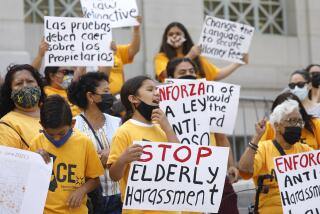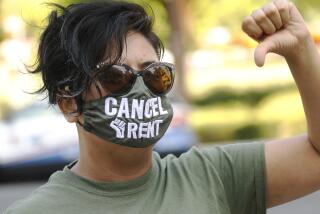Do the crime, do the cleanup
SACRAMENTO — At the urging of Los Angeles officials alarmed about graffiti defacing the city’s many murals, Gov. Arnold Schwarzenegger signed a measure into law Wednesday that requires those convicted of the vandalism to remove the scrawls and, in some cases, keep the tagged surfaces clean for one year.
The law was welcomed by many officials as another tool to use against a recent explosion of graffiti, but some gang experts were worried that it might put the offenders in jeopardy if they had to cover up graffiti by other gang members.
The measure applies to graffiti on any surface, including blank walls.
Los Angeles, which sponsored the legislation, has recorded a significant increase in graffiti in the last three years, from 25 million square feet of graffiti-stained surfaces in 2005 to 31.7 million in the year that ended June 30, said Paul Racs, director of the city’s Office of Community Beautification.
Last year, the city received reports of graffiti at 653,520 locations, 40,000 more than the year before, he said.
Racs said graffiti was increasing partly because it is celebrated on the Internet.
“There are video games where the good guy is the tagger and the bad guy is the cop,” he said. “Graffiti is also used in advertising, so young people are getting a dual message.”
Artist Judy Baca, founder of the Social and Public Art Resource Center, has seen graffiti nearly cover her mural “Hitting the Wall” on the 110 Freeway downtown.
Baca said the city had cut funding for the creation and maintenance of murals.
“These kids don’t have the possibility of being a muralist themselves,” she said, so they angrily ruin murals with graffiti.
The measure makes it mandatory, instead of discretionary, for a court to order a defendant who is convicted of graffiti vandalism to clean up or repair the property when feasible. A judge could decide not to order a tagger to risk his life by keeping graffiti off a sign that hangs over the freeway.
The court also could order the defendant or a minor defendant’s parents or guardians to keep the damaged property free of graffiti for up to one year.
“By having to clear up the mess, they would realize how much effort and cost is involved in tidying up after them,” said Assemblyman Mike Davis (D-Los Angeles), author of the law.
Some gang experts said the requirement that young offenders remove others’ graffiti could put them in harm’s way.
“The cause for a lot of violence involves graffiti and either crossing it out or removing it,” said Khalid Shah, director of Stop the Violence, a gang intervention program.
He said Homeboy Industries closed a program that put gang members to work removing graffiti after two young people were shot to death while cleaning walls.
--
More to Read
Sign up for Essential California
The most important California stories and recommendations in your inbox every morning.
You may occasionally receive promotional content from the Los Angeles Times.











